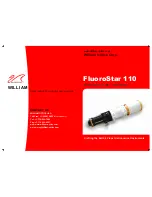
12
The popular and more familiar constellations often provide the easiest landmarks to
help find the planet’s locations and paths of orbit. Most people have looked up at night
and seen some of the planets without even realizing it. A planet looks like a bright star
but does not twinkle like a star does; it looks like a tiny ball. Venus, Mars, Jupiter, and
Saturn are the easiest planets to view. Mercury is dimmer, usually below the horizon,
and more challenging to find.
Each of the planets provides interesting views. Venus is covered with clouds so all that
is visible is an extremely bright light, the brightest next to the moon. However, Venus,
like the moon, goes through phases. As it travels around the sun, different areas of its
surface are illuminated, producing crescent shapes of varying size. Mars is the red
planet. When it is above the horizon, it is noticeably red and stands out like a beacon in
the night sky. The apparent brightness of Mars varies as the planet orbits around the
sun and throughout its period of visiblity, it will brighten and dim depending on its
distance from Earth.
Jupiter is the largest planet in our solar system and the second brightest next to Venus.
Jupiter has many moons, four of which are often visible through your telescope when
viewing conditions permit. As you watch them throughout the evening, you will see that
they change position relative to each other and to Jupiter. It is possible with careful
planning to actually see one of the moons disappear either in front of or behind Jupiter
as it orbits around the planet. Another great feature of Jupiter is the cloud belt pattern.
Jupiter is alive with weather activity and its clouds have formed over time into belts
visible through telescopes in the right atmospheric conditions.
Saturn, the second largest planet, is not as bright as Jupiter and so its moons are not as
visible through small telescopes. The large rings that encircle Saturn are spectacular to
observe, however. The planet and its rings appear pale yellow. The major division in the
rings, the Cassini division, is possible to see if you keep the telescope firmly in position.
Uranus and Neptune are the last of the solar system gas giants. They do not provide as
spectacular a sight as Jupiter or Saturn, but are nonetheless rewarding to see.
Beyond our solar system, there are many more objects to be found. Galaxies, nebulae,
and star clusters abound!




















